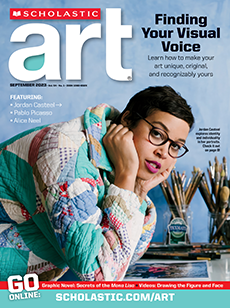When you look at an artwork, think about how the artist uses light as a tool. Ask questions about what the highlights and shadows add to the scene. Do they emphasize part of the work? If so, why might the artist have made that choice?
Whether sharing a story, making a powerful statement, or studying details of daily life, the 20th-century artists featured on these pages understand how to use light as a tool to illustrate their ideas.
Light might seem purely practical, but it also has the potential to add brilliance and drama to a work of art.
As you look at the art on these pages, take note of how each artist explores light. Are they using highlights and shadows to draw your attention to certain parts of their work?
These modern artists use light as a tool to shape their ideas. Keep reading to learn how working with light allows artists to share stories, make powerful statements, or study daily life.
